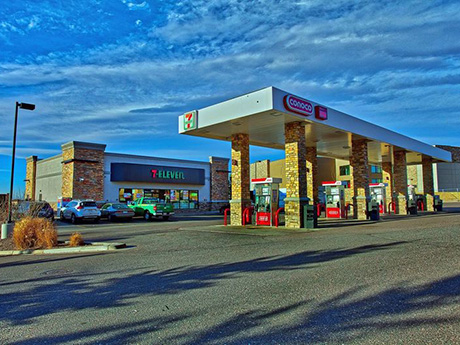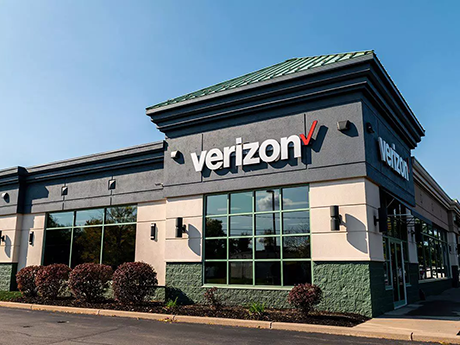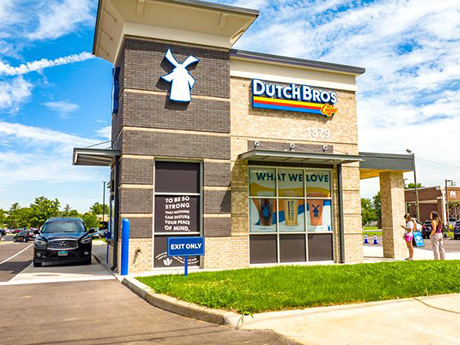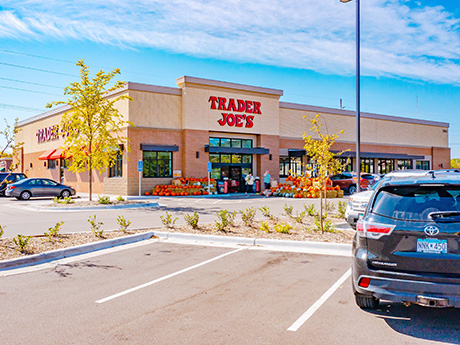Developers and owners of net lease properties have been used to receiving high prices for their assets — fueled by low debt costs for buyers — over the past decade. With rising interest rates, that has changed. Cap rates have been rising and capital is harder to obtain, be it for new net lease development or acquisition of existing assets. That has narrowed the demand, resulting in a lower sales volume over the past year.
The volume of single-tenant net lease investment sales was down about 34 percent in 2023 compared to 2022, according to Northmarq’s fourth-quarter 2023 Market Snapshot for Single-Tenant Retail. The average cap rate, meanwhile, rose from 5.62 percent in 2022 to 6.14 percent in 2023.
Development of new single-tenant net lease deals is stymied by access to capital, with many regional banks — the lifeline of small developers — on the sidelines.
Shopping Center Business interviewed a number of executives in the net lease sector, and studied research from leading firms for our annual overview of the single-tenant net lease property sector.
Dealflow and Trends
While deal velocity is down, deals are still happening. Today, deals are much more individualized, and both parties usually have to have an impetus to transact.
“Buyers and sellers are in a staring match; they are looking at each other trying to figure out what the next move is,” says Sean O’Shea, managing principal of The O’Shea Net Lease Advisory in Rolling Hills Estates, Calif. “Part of the challenge is that net lease properties had been commoditized. The truth is, not all net lease properties are the same. The sellers have gone through a decade of asset inflation that has been generated by low debt costs. We have had extraordinarily high values for the past decade. Now, it’s a period of adjustment and those adjustments are slower than people would like.”
“In some ways, it is neither a buyer’s nor a seller’s market,” says Matthew Mousavi, managing principal of SRS Real Estate Partners’ National Net Lease Group, in Newport Beach, Calif. “Buyers would like to see higher yields, and sellers — while still able to achieve strong pricing — are not achieving the same cap rates as they were just one or two years ago.”
The most popular type of deal with investors are single-tenant quick-service restaurants (QSRs) with drive-thrus, according to Bill Asher, executive vice president of Hanley Investment Group Real Estate Advisors in Corona del Mar, Calif.
“The most popular product type, which represents a flight to security for the net lease buyer, is a single-tenant quick-service restaurant with a drive-thru,” says Asher. “This is where we are seeing the most demand from individual investors, 1031 exchange buyers and family trusts, especially for corporate leases priced at $5 million or less.”
STNL retail assets with corporate leases fetched lower cap rates — higher prices — than average in the sector in 2023 than 2022, according to The Boulder Group’s Q4 2023 Net Lease Market Report. Corporate QSR locations had an average asking cap rate of 5.59 percent, versus an average national asking rate of 6.35 percent for all retail properties in the fourth quarter, according to Boulder. Strong QSRs with corporate leases like McDonald’s, Chick-fil-A and Raising Cane’s have average asking cap rates of less than 5 percent. Credit, again, is a key factor in many long-term investors’ strategies.
“As investors look to the future and have concerns about potential economic instability, buyers will seek businesses with a high credit rating, like 7-Eleven, which can do well during challenging times and provide a reliable cash flow,” says Asher.
O’Shea’s referral of “commoditization” refers to the whirlwind days post-Great Financial Crisis when single-tenant net lease retail assets were looked at more for their stats on paper — a certain tenant, cap rate, tenant credit — than their individual criteria. Buyers often had types of assets in mind — certain QSRs, drug stores, etc. — that were more important than the location and performance of the asset. Today, that has changed. The once stable net lease tenant is not so stable anymore. Once seemingly impenetrable tenants like Walgreens and CVS have closed stores, making the drug store category not as popular as it once was.
“Over the years, many have said that net lease properties were the bonds of the real estate investment business,” says O’Shea.

Some investment sales brokers are seeing a flight to quality among investors, causing sales of some assets. Bankruptcies and store closings have made some investors nervous that their portfolios are too weighted with some retail names or asset classes.
“We have seen the pharmacy sector get a bit choppy in the past year, so we have seen some rebalancing it investors’ portfolios that are heavy on pharmacy names,” says Jeffrey Thomas, managing partner with The Thomas Group in Sun Valley, Idaho.
Pharmacy has definitely been the category to watch in 2023. Once the darling of the net lease sector, last year saw Rite-Aid declare bankruptcy, the credit of Walgreens downgraded and the announcement by CVS that it was closing stores.
“The pharmacy sector has been making headlines for all the wrong reasons over the past year, and what was once thought to be a bulletproof sector is definitely going through a rough patch,” says Thomas. “We still think the pharmacy space has longevity, but it’s definitely looking for its footing.”
While many STNL retail assets are, as Asher alluded to, still considered a flight to safety, there is an upside to some store closings for the net lease sector, with an additional positive. Retailers who close stores are usually on corporate leases, so the rent still gets paid while the retailer negotiates a buyout or sublease of the property. Because retail space is at a premium due to little new supply, assets can usually be backfilled with a new tenant quickly. The bad news is that the sub-tenant may make the property value lower than its original value because of its credit and other factors.
“When you talk to retail leasing agents throughout the country, they are hoping for more bankruptcies because those will free up more space that they can lease,” says Robert Horvath, executive vice president at Boston-based Horvath & Tremblay. “There are so many new tenants that want to expand, but there is no space available. The vacancy rates are very low.”
Investment Sales
All the investment sales brokers interviewed for this article reported that transaction volume was lower in 2023. Properties priced under $5 million are the assets that are moving quickly. Those deals are often all-cash transactions. When a buyer has financing, oftentimes that comes with 50 or 60 percent loan-to-value, making the numbers much more important.
“There have been many quick movements in the capital markets over the past 24 month so sellers’ expectations that were pretty wide; they have since narrowed,” says Horvath. “Being a broker today is easier than it was nine months ago; nine months ago, we couldn’t get the bid ask spread between sellers and buyers tight. Now, it is tightening because sellers who want to transact realize the market that they are in and they are meeting the buyers’ expectations much easier.”
Institutional buyers, whether private or public, are more active in the market, since they are often able to pay with cash and make the returns work. Private buyers made up 57 percent of the buyers in 2023, according to Northmarq, with public REITs the second largest pool at 24 percent. Smaller private buyers have been less active as they struggle with limited returns that single-tenant net lease properties offer, says O’Shea.
One issue slowing sales from individual buyers is a reduction in the number of 1031 exchanges. Many owners of real estate assets have decided to hold them until values are higher. Across most all asset classes, financing has made transactions more difficult, so the volume of those investors doing 1031 exchanges has been reduced as a result.
“A majority of transactions in 2023 were all-cash,” says Asher. “If financed, the transactions were facilitated earlier in the year when rates were lower or with larger down payments with relationship lenders to help mitigate higher rates and achieve desired cash flows. We also saw some sellers willing to provide some short-term financing to help effectuate sales to overcome the volatility and uncertainty of the traditional lending environment, especially in certain periods during Q3 and Q4 when borrowing rates were at their peak.”
1031 activity is slow because many investors have trouble identifying replacement properties that meet their desired returns.
“Some sellers would like to sell and do a 1031 exchange, but don’t like the upleg and financing environment the market has to offer,” says Mousavi. “Others are realizing strong NOI and rent gains, absorption of vacancy and other positive trends at the property level.”
Horvath & Tremblay has seen activity pick up since the beginning of 2024.
“Deals are moving; certain assets move very quickly,” says Horvath. “It is really a deal-by-deal basis. Some deals we receive six or seven offers; others we might get one offer in four months on the market. It is very much asset-by-asset today — size, asset quality, tenant credit and other metrics are in play.”
Buyers who have determined to transact are spending a lot more time analyzing assets than they did in the past.
“There is a higher degree of scrutiny where more attention to detail is required,” says O’Shea. “There is more involved than quoting a cap rate; that
is just one reference point. Today, you have to dig a lot deeper to understand whether a property is worth what a buyer is being asked to pay.”
“In this market, investors are really scrutinizing all aspects of any new acquisition,” says Thomas. “Smaller retail assets with investment grade tenants and longer lease durations are in high demand.”
Less velocity in the markets means that properties do not go under contract as quickly, allowing buyers to be choosy.
“Generally, investors have become more selective as they have more inventory to choose from, resulting in longer sales cycles than we have experienced in a while,” says Asher. “This means that most buyers are looking for an A-plus location with an A-plus tenant and know they do not have to pay the same premium they had to pay six to 12 months ago. As inventory is up, these buyers have an opportunity to get a better deal now with fewer buyers in the market, while sellers still have the opportunity to achieve premium pricing historically.”
Investment sales brokers say there is no lack of want from investors to acquire properties, just today’s market conditions prevent many deals from making sense.
“Investors are sitting on a massive pile of equity, and the appetite is certainly there,” says Mousavi. “Net lease retail and industrial are doing quite well in terms of property level fundamentals, rent growth, absorption and other characteristics. The capital is motivated and eager to buy deals, but they’re having a difficult time making sense of the current cap rates that many deem ‘not high enough.’”
Interest Rates And Capital
Because values are less in the net lease sector than multi-tenant properties, the financing is often a make-or-break situation for a buyer. If a property is purchased at a low cap rate, financing at a higher interest rate often has a large impact on net operating income, making the deal implausible.

“For buyers dependent on financing, prices declined last year but not substantially enough to reflect the volatility of the capital markets, especially in Q3 and Q4 2023 when the 10-year Treasury note spiked approximately 100 basis points from August to November and slid back down that same interval in December 2023,” says Asher.
While the Federal Reserve Bank has held interest rates steady in recent months — and hinted at lowering them later in the year — the net lease sector may experience a lag before activity returns.
“In 2024, there is a strong indication that there will be some reduction in the interest rates, which is encouraging,” says O’Shea. “However, there is not a direct correlation to the cap rates. There are large inventories of net lease properties. Even when the interest rates change, it is going to take a longer time for the existing inventory to be absorbed.”
The volatility has kept many potential buyers and sellers from the market.
“Sellers often do not want to relinquish assets at the current going cap rates, and buyers can’t afford to buy these assets at the current cap rates,” says O’Shea.
Many see positives for the market in 2024 if interest rates should be lowered toward the end of the year. Even without that, many sellers may have to move forward due to asset hold maturity periods and loan maturities.
“The second half of the year — as rates begin to come down — should see more market movement,” says Horvath. “If rates drop 50 or 75 basis points by December 2024, we will be in good shape.”
“Watch for 2024 to be a year that sellers are more likely to meet the market, drawing from lessons learned through exercising too much patience amidst the volatility in market conditions in 2023,” adds Asher.
For many buyers and sellers, that is welcome news.
“Sellers, aligning with the current rate environment, can attract aggressive bids if positioning assets favorably,” adds Thomas. “We continue to see substantial capital on the sidelines, waiting for the right opportunity to be deployed, but that is satisfied waiting in treasuries in the low to mid 5 percent range. If a seller can meet the market, they will definitely find investors hungry for acquisitions.”
The availablilty of capital — for both acquisitions and new development — has put a strain on the sector.
“The net lease market has gone from a market with plenty of access to capital in 2021 and 2022 to a capital constrained market,” says Ralph Cram, president of Envoy Net Lease Partners.
Community and regional banks have largely pulled out of the commercial real estate construction loan market over the past year, according to Cram.
“The banks who are still participating in the net lease construction world have seen their advance rate fallen by 15 to 20 percent since the beginning of 2023, making a 70 percent loan-to-cost/65 percent loan-to-value range now,” says Cram. “Their biggest limiting factor is debt service coverage ratios, as most of the financing costs are at or above what the cap rates are where developers are building projects.”
Envoy is a private lender who has the ability to go higher than average on the loan-to-cost value. The company had a strong 2023, despite the fact that many deals do not pencil in the increasing cap rate environment, says Cram.
“We’re seeing a lot more deals, but we are closing on a smaller percentage of them,” he says.
The availability of financing has affected some buyers’ ability to transact on net lease assets, according to Asher.
“Due to overall market conditions, last year we saw fewer capital sources interested in lending money and an increase in last minute renegotiations or re-trades at the eleventh hour on interest rates borrowers thought they had locked on the front end of the process,” says Asher. “Banks shifted their focus to existing clients, offering lower leverage and scrutinizing the fundamentals of the real estate to a higher degree than they have in a long time. I expect more of the same in 2024.”

Cram says cap rates have risen faster on assets with non-investment grade tenants. Envoy is focused on assets that have a lease term with 15 years or more.
“The buyer market is looking for better quality credit tenants as well as longer leases,” says Cram. “The likelihood of selling your property on a timely basis in 2024 to early 2025 is going to be based on credit quality and lease term, then location.”
The lending challenge is affecting development of new stores.
“There is more retail demand for single-tenant net lease retail construction projects than there is capital to fill it,” says Cram. “That is going to lead to tenants not being able to make their expansion plans. Some may only be able to deliver two-thirds of what they had planned because they cannot find enough developers to build the units — because those developers cannot find enough capital.”
Many investment brokers see today’s climate as one the net lease sector will sit with until a shift in the capital markets happen.
“Volume and velocity will continue to trend below prior years,” says Mousavi. “Until the interest rates and Fed funds rate come down, we will continue to see these lower transactional volume levels. I also expect cap rates to continue to rise until such a time we meet equilibrium and buyers enter the market, or rates come down and leveraged returns begin to make sense again.”
“Investors, borrowers and lenders have to be careful in this market,” adds Cram. “Cap rates are still rising. Until cap rates stabilize, you have to be very cautious about what you are building and at what kind of return you are building to. Likely, your construction costs are going to rise as cap rates rise, so your profits might go down.”
— Randall Shearin
This article originally appeared in the February 2024 issue of Shopping Center Business magazine.


